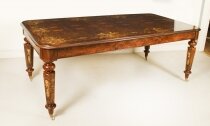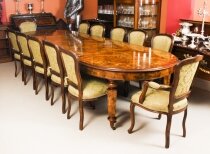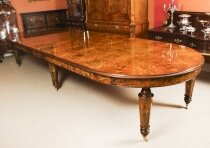Baldock, Edward Holmes (1777–1845)
In 1805 Baldock's name first appears as the freehold owner of 7 Hanway Street, London. Over the years he expanded his premises. By 1840 his property in this street comprised nos 1 and 2, both with back premises, and in addition he owned a yard and no. 3, which he let. It was in 1 and 2 Hanway Street that he carried on business up to 1843 when he retired, selling his stock and moving to a fashionable residential address, Hyde Park Place. According to one 19th-century source, the business was taken over by Frederick Litchfield's father. He was buried in St Pancras Church, Euston, where he is commemorated by a marble memorial tablet on the north wall, dedicated jointly to him and Mary Frances Westoby.
In 1805 he described himself as dealer in china and glass. By 1821 he was styled in the Post Office Directories as antique furniture and ornamental china dealer, and in 1826 he described his activities in a bill heading as ‘buying, selling, exchanging and valuing China, Cabinets, Screens, Bronzes etc.’. Though Baldock's business consisted primarily in dealing in antique porcelain and furniture — largely foreign — he repaired, remodelled and altered existing furniture. He also produced designs for new pieces and had them made.
In 1836 Baldock sold French eighteenth-century furniture to Lady Stafford (Countess of Sutherland) for Dunrobin Castle, and in 1842 Scotland’s leading country house architect, William Burns, recommended to his patron O. Tyndall Bruce of Falkland House that ‘for Cabinets and China, do not omit going to Baldock’s Hanway Street, Oxford Street… which is the first place in London’.
In 1841 the Duke of Buccleuch was sent drawings of bedroom furniture as well as working drawings of an octagonal table, a bookcase and three stalls. A design of a table in the Buccleuch papers which is annotated ‘No. 3 Amboyna wood ground with coloured flowers’ is almost certainly the preliminary sketch for a table which was later made. Robert Byng (1764-1847) and George Newport, 2nd Earl of Bradford were also customers of Baldock’s. In 1840 he supplied a two encoignures with slab tops to the latter (one illus. FHS Newsletter (February 2017, p. 5). A pair of china cabinets on stands with porcelain mounts, made c.1835-43 for the 3rd Marquis of Lansdowne were sold by auctioneers, Bamfords, in 2007
A number of well-constructed and, in some cases, finely inlaid pieces of furniture are known which are 19th-century in date and which are branded with Baldock's initials, ‘EHB’. While some are pastiches of 18th-century French furniture others are in a contemporary English style. Whether these pieces were both designed by Baldock and made on his premises is impossible to tell. The ‘EHB’ mark cannot be regarded as a maker's stamp in the accepted sense of the term as it is also struck on genuine French 18th-century furniture which merely passed through Baldock's hands.
Burr Walnut
refers to the swirling figure present in nearly all walnut when cut and polished, and especially in the wood taken from the base of the tree where it joins the roots. However the true burr is a rare growth on the tree where hundreds of tiny branches have started to grow. Burr walnut produces some of the most complex and beautiful figuring you can find.
Marquetry
is decorative artistry where pieces of material of different colours are inserted into surface wood veneer to form intricate patterns such as scrolls or flowers.
The technique of veneered marquetry had its inspiration in 16th century Florence. Marquetry elaborated upon Florentine techniques of inlaying solid marble slabs with designs formed of fitted marbles, jaspers and semi-precious stones. This work, called opere di commessi, has medieval parallels in Central Italian "Cosmati"-work of inlaid marble floors, altars and columns. The technique is known in English as pietra dura, for the "hardstones" used: onyx, jasper, cornelian, lapis lazuli and colored marbles. In Florence, the Chapel of the Medici at San Lorenzo is completely covered in a colored marble facing using this demanding jig-sawn technique.
Techniques of wood marquetry were developed in Antwerp and other Flemish centers of luxury cabinet-making during the early 16th century. The craft was imported full-blown to France after the mid-seventeenth century, to create furniture of unprecedented luxury being made at the royal manufactory of the Gobelins, charged with providing furnishings to decorate Versailles and the other royal residences of Louis XIV. Early masters of French marquetry were the Fleming Pierre Golle and his son-in-law, André-Charles Boulle, who founded a dynasty of royal and Parisian cabinet-makers (ébénistes) and gave his name to a technique of marquetry employing brass with pewter in arabesque or intricately foliate designs.



















